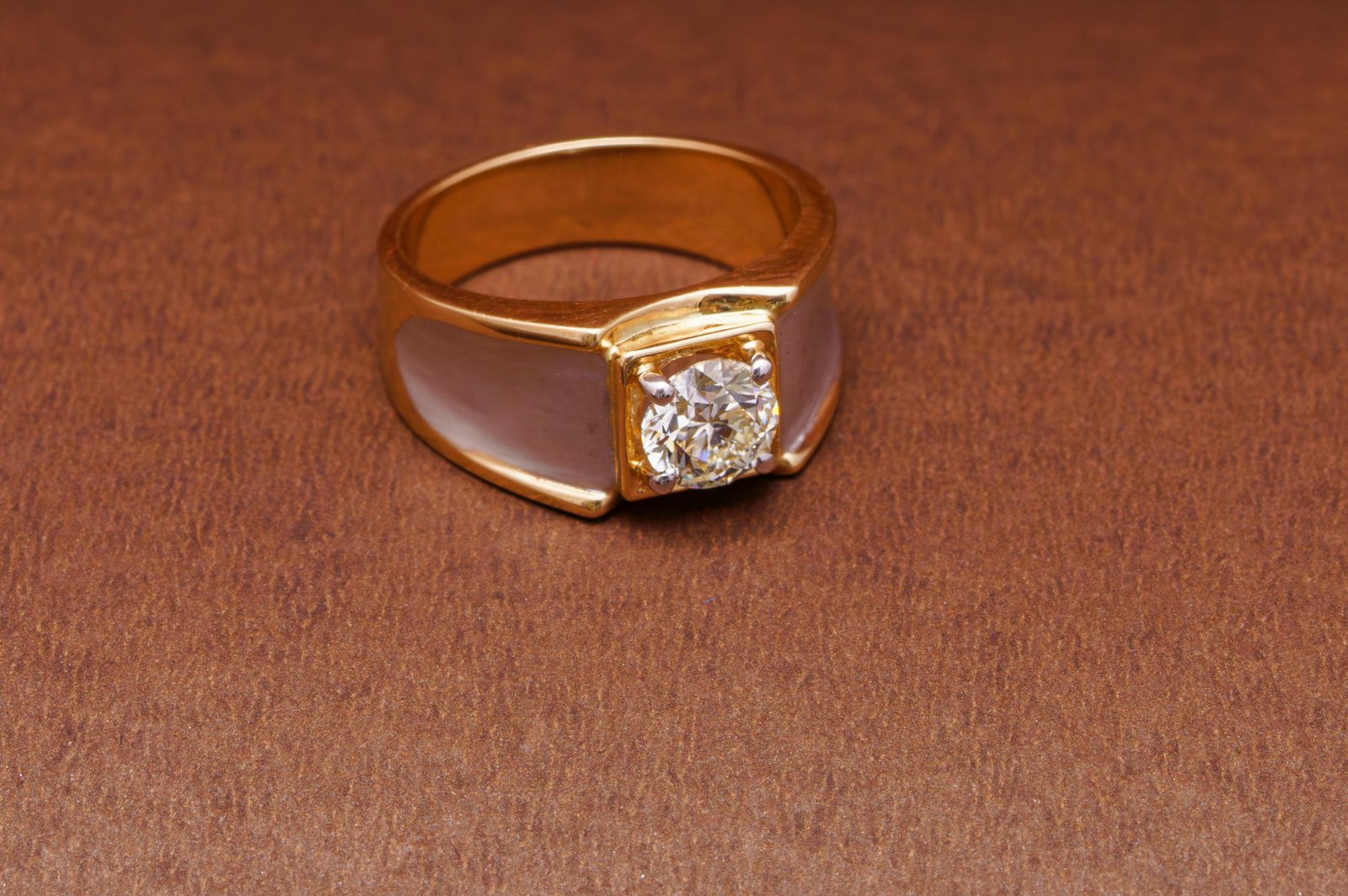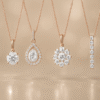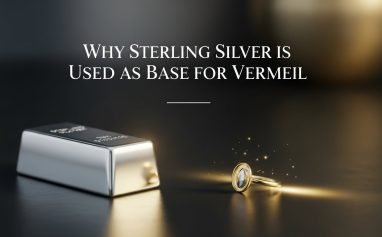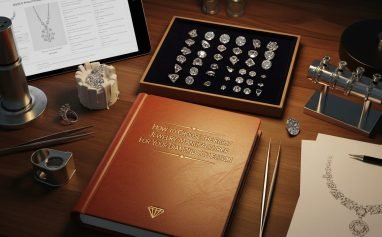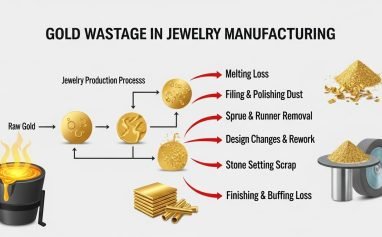What is Resistant Coating in Jewelry? Benefits & Limitations Explained
Jewelry has always been more than just an accessory — it’s a blend of artistry, tradition, and self-expression. But while a diamond’s brilliance or a gold chain’s glow may steal the show, every jewelry lover knows the frustration of tarnish, fading, or scratches over time.
That’s why resistant coating has become one of the most important advancements in modern jewelry-making. Often described as an invisible shield, resistant coating helps jewelry stay brighter, last longer, and resist tarnishing.
In this guide, we’ll explore what resistant coating is, how it works, its pros and cons, how it compares to gold plating and vermeil, the costs involved, and why it’s shaping the jewelry industry in 2026.
What is Resistant Coating in Jewelry?
Resistant coating is a transparent protective layer applied to jewelry to enhance durability and resist external damage. Unlike plating, which adds a layer of metal (gold, silver, rhodium), resistant coating is non-metallic and clear. Its goal isn’t to change the jewelry’s color, but to preserve the original look for longer.
Think of it like a clear phone screen protector: it doesn’t change how your phone looks, but it keeps it safe from scratches, dust, and minor wear.
Types of Resistant Coating
- Nano / E-Coating (Electro-coating):
- Uses nanotechnology for an ultra-thin, transparent finish
- Popular in fashion jewelry and silver jewelry
- Typically lasts 6–24 months depending on wear
- Lacquer Coating:
- A more traditional method using clear lacquer
- Slightly thicker but can sometimes yellow with age
- Better for costume jewelry than fine pieces
- Ceramic or Advanced Polymer Coatings:
- High-tech coatings used in premium collections
- Known for durability and scratch resistance
- Becoming popular in European and U.S. jewelry markets
- Resistant Overlays on Plating:
- Applied on top of gold plating or vermeil
- Protects plated layers from fading faster
Why Resistant Coating Matters in 2026
The global jewelry market is valued at over $350 billion in 2025 (Statista) and consumers are demanding long-lasting, low-maintenance jewelry.
- 62% of consumers in a 2025 Jewelry Insider Survey said tarnish-resistance was a top priority when buying jewelry.
- 48% of retailers reported fewer returns after offering resistant-coated jewelry.
- Luxury brands like Pandora and Swarovski are actively testing advanced coatings to increase product lifespan.
In short: resistant coating is not just a manufacturing choice — it’s a consumer-driven demand shaping the industry.
Benefits of Resistant Coating in Jewelry
1. Tarnish & Oxidation Protection
- Especially critical for silver and brass jewelry, which tarnish quickly.
- Resistant coating delays oxidation by creating a protective barrier.
- Example: A silver necklace can remain tarnish-free 3x longer when coated.
2. Scratch & Abrasion Resistance
- While not scratch-proof, coated jewelry is more resistant to daily wear.
- Ideal for rings and bracelets that experience frequent contact.
3. Skin Protection
- Provides a layer between the skin and metal.
- Reduces reactions for people sensitive to nickel or brass.
4. Preserves Original Look
- Unlike plating, resistant coating is transparent.
- Your gold stays gold, silver stays silver — just with added protection.
5. Lower Maintenance
- Coated jewelry requires less frequent cleaning.
- Occasional wiping with a soft cloth is usually enough.
Limitations of Resistant Coating
- Not Permanent – Lifespan is 6 months to 2 years, depending on jewelry type and usage.
- Can Wear Off – High-friction pieces like rings may need re-coating sooner.
- Additional Cost – Coated jewelry is priced higher than uncoated equivalents.
- Re-Coating Required – Over time, consumers may need professional re-application.
Resistant Coating vs. Plating vs. Vermeil
This is where many jewelry buyers get confused — resistant coating is not the same as plating or vermeil.
| Feature | Resistant Coating | Gold Plating | Gold Vermeil |
| Material | Transparent (non-metal) | Thin gold layer (0.1–0.5 microns) | Thick gold layer (≥2.5 microns) on sterling silver |
| Purpose | Protects & preserves | Changes color to gold | Luxury finish with durability |
| Durability | 6–24 months | 6–12 months before fading | 1–2 years before re-plating |
| Look | Preserves original | Gold look | Premium gold look |
| Cost | Low–Medium | Medium | Higher (luxury category) |
| Best For | Silver/brass protection | Affordable gold look | High-end alternative to solid gold |
Key Difference:
- Plating/Vermeil change the look of jewelry (making it gold-colored).
- Resistant coating keeps the original look intact and makes it last longer.
In fact, many jewelers combine resistant coating with plating or vermeil to extend their lifespan.
Costs of Resistant Coating in Jewelry
The cost depends on jewelry type and coating technology.
Average 2026 Market Prices:
- Earrings: $8 – $20
- Necklaces/Pendants: $15 – $30
- Rings/Bracelets: $10 – $25
High-tech ceramic coatings can cost slightly more but provide longer-lasting protection.
Retailers often include coating in the price — meaning consumers may not notice it as a separate line item.
The Future of Resistant Coating in Jewelry
As jewelry technology evolves, resistant coating is becoming more sophisticated:
- Longer Lifespan Coatings: Researchers are developing coatings that last 3–5 years.
- Eco-Friendly Coatings: New water-based solutions with minimal chemical impact.
- Smart Coatings: Experimental coatings that can self-heal minor scratches.
Industry analysts expect global adoption of nano-coatings in jewelry to grow 18% annually between 2025–2030.
Care Tips for Resistant-Coated Jewelry
Even with coating, jewelry care is essential.
- Avoid Harsh Chemicals: Perfumes, chlorine, and cleaning agents can wear coating faster.
- Store Properly: Keep jewelry in a dry, separate pouch.
- Gentle Cleaning: Use a soft, damp cloth — no abrasive polish.
- Re-Coating: Consider professional re-coating after 1–2 years for high-wear items.
FAQs About Resistant Coating in Jewelry
1. Does resistant coating make jewelry waterproof?
Not completely. It resists moisture but should still be kept away from salt water and chlorine.
2. Can resistant coating be applied to fine jewelry?
Yes. It’s often used on silver and gold-plated items, but some brands also coat solid gold for extra protection.
3. How long does resistant coating last?
Typically 6 months – 2 years, depending on wear and quality.
4. Can I re-coat jewelry at home?
Professional application is best for durability, though DIY sprays exist for costume jewelry.
5. Is it worth paying extra for coated jewelry?
Yes, especially for silver, brass, and plated jewelry where tarnishing and fading are common.
Final Thoughts
Resistant coating is one of the most practical innovations in jewelry care. It doesn’t change the look of your jewelry — it simply helps it last longer, resist tarnish, and maintain shine. While it’s not a permanent solution, its benefits outweigh its limitations, especially for silver, brass, and plated jewelry.
For consumers, choosing resistant-coated jewelry means less maintenance, fewer tarnish worries, and longer-lasting beauty. For brands like Nakassi, it represents a commitment to blending artistry with durability — ensuring jewelry remains as stunning as the day you first wear it.

Brijesh brings a decade of experience in SEO and a deep love for jewelry to his writing. He excels at creating content that shines both on the page and in search engines, ensuring every story about gems and craftsmanship reaches the right audience.

